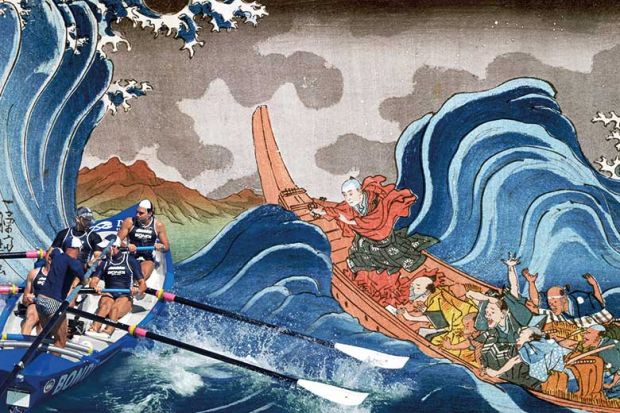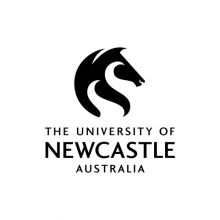While Australian higher education has been rocked by government moves to take money away from universities, perhaps the most contentious issue of the past year has involved a philanthropic group’s desire to put tens of millions of dollars back in.
Among the objections to the Ramsay Centre’s attempts to bankroll degrees in Western civilisation has been a conviction that it would “privilege the West at the expense of the rest”. An open letter endorsed by 200 academics at the University of Sydney after their institution’s negotiations with the centre became public knowledge proclaimed that “the Ramsay programme represents, quite simply, European supremacism writ large. It signals that the study of the European cultural tradition warrants better educational circumstances than that of others.”
The suggestion offended Australian academia’s self-image as an egalitarian class of geographical agnostics, playing no favourites in forming working alliances. “Collaborating with chauvinistic Western essentialism would be a violation of our crucial role in promoting a society of diversity, inclusiveness and mutual respect,” the open letter insisted.
Australians pride themselves on being ardent travellers who can work with anyone. But do their academics travel with equal fervour to every corner of the globe, collaborating with all comers? And, perhaps more pertinently, are they paying enough attention to their Asian neighbours as the epicentre of global influence shifts to the East in the so-called Asian Century? Or are they instinctively drawn to the comfort zone of the West, where many trace their culture and bloodlines?
Are they as readily inclined to Yogyakarta as to Yale? Would they lecture in Laos instead of London? Could they forgo a sabbatical in Siena, a conference in Copenhagen, for Seoul or Cangzhou? In teaching, in research, in engagement and in self-concept, do Australian universities have a Western skew?
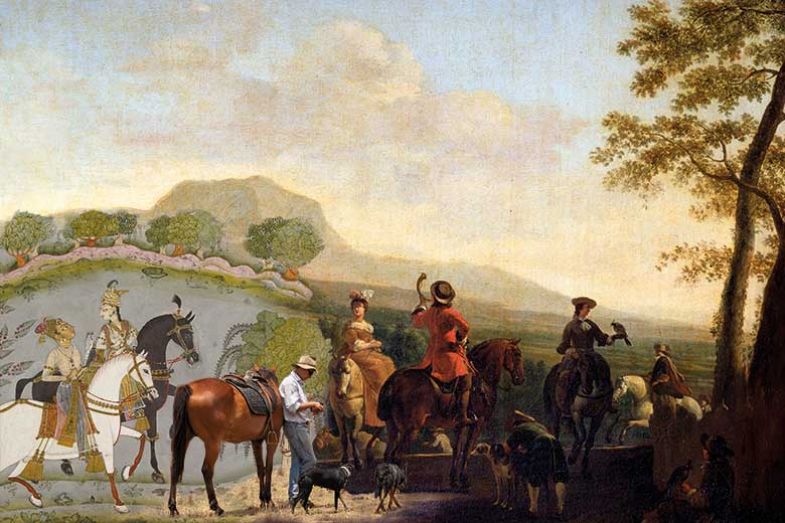
They do not in teaching, data suggest. The terms “Asia” or “Asian” appear in 10 Australian undergraduate course titles, according to the government’s Course Seeker website, compared with just one mention of “Europe” and none of “America”. Asia features in the outlines of 65 courses, compared with 20 references to Europe and 24 to America, leaving aside a suite of 30 double-degrees at a single Sydney university where the course descriptions cite all three regions.
Australian universities also lean decidedly East in terms of education exports, with Asians constituting the vast majority of overseas students obtaining Australian degrees. The top 10 source countries of the 400,000-odd foreign students undertaking Australian higher education courses last year were all in eastern, southern and south-eastern Asia, collectively constituting about 83 per cent of enrolments – and triggering concerns that universities are far too dependent on a single source market, China, for a crucial revenue stream.
Outward-bound Australian students also favour neighbouring countries for their study-abroad experiences. Of the top 14 international destinations targeted by almost 50,000 Australian university students in 2017, eight were in the Asia-Pacific region, according to a report by the Australian Universities International Directors Forum. These countries attracted as many students as the principal North American and European countries combined.
Phil Honeywood, chief executive of the International Education Association of Australia, credits the federal government’s signature New Colombo Plan for not only fostering outbound student mobility but also for refocusing it on the Indo-Pacific. “Australian undergraduates used to fly over Asia to get to Europe and North America,” Honeywood says. “They now vote with their feet and go to Asia.”
The New Colombo Plan supports study experiences in 40 countries in the Asia-Pacific region, from Pakistan in the west to Mongolia in the north and French Polynesia in the east. Named after the post-war Colombo Plan, which funded 40,000 Asians, over 30 years, to study at Australian universities, the plan was launched in 2014 to boost the number of Australian undergraduates studying and gaining work experience in Asia, after a report revealed that only 7,000 did so in 2012.
Kent Anderson, former deputy vice-chancellor of the University of Western Australia, says that the plan has been instrumental in turning study abroad from a “cottage industry” run by handfuls of staff to core business at every Australian university. “It’s been mainstreamed and institutionalised,” he says. “I don’t think that’s happened anywhere else [except] in elite US universities.”
Australian universities also favour the Asia- Pacific in their transnational efforts, with the region home to two-thirds of Australia’s overseas branch campuses, branded colleges and joint venture academies. The others are mostly in the Middle East and Africa.
And while Australian universities do not routinely divulge data on where their staff travel overseas – with some deeming this information commercially sensitive – the University of Sydney is an exception, listing its senior executives’ promotional trips in its annual reports. This decade, 52 per cent of those visits have been to Asia-Pacific countries, with Europe accounting for 23 per cent and North America 12 per cent.
Reporting rules also require Victorian universities to provide information about their overseas visits on request, although just one – La Trobe University – was able to do so within Times Higher Education’s publication time frames.
Of about 1,000 overseas trips that La Trobe staff took to 67 countries in 2017, 41 per cent were made to nations in the Asia-Pacific. The region attracted 50 per cent of journeys for research and field study, 60 per cent for marketing and business meetings, 78 per cent for partner visits and 96 per cent for teaching – although Europe and North America were the preferred destinations for conferences and seminars, with the Asia-Pacific attracting just 35 per cent of trips for this purpose.
So judged on what, who and where they teach, Australian universities seem inclined to the East. And the readily available data also suggest the East is where they tend to do business.
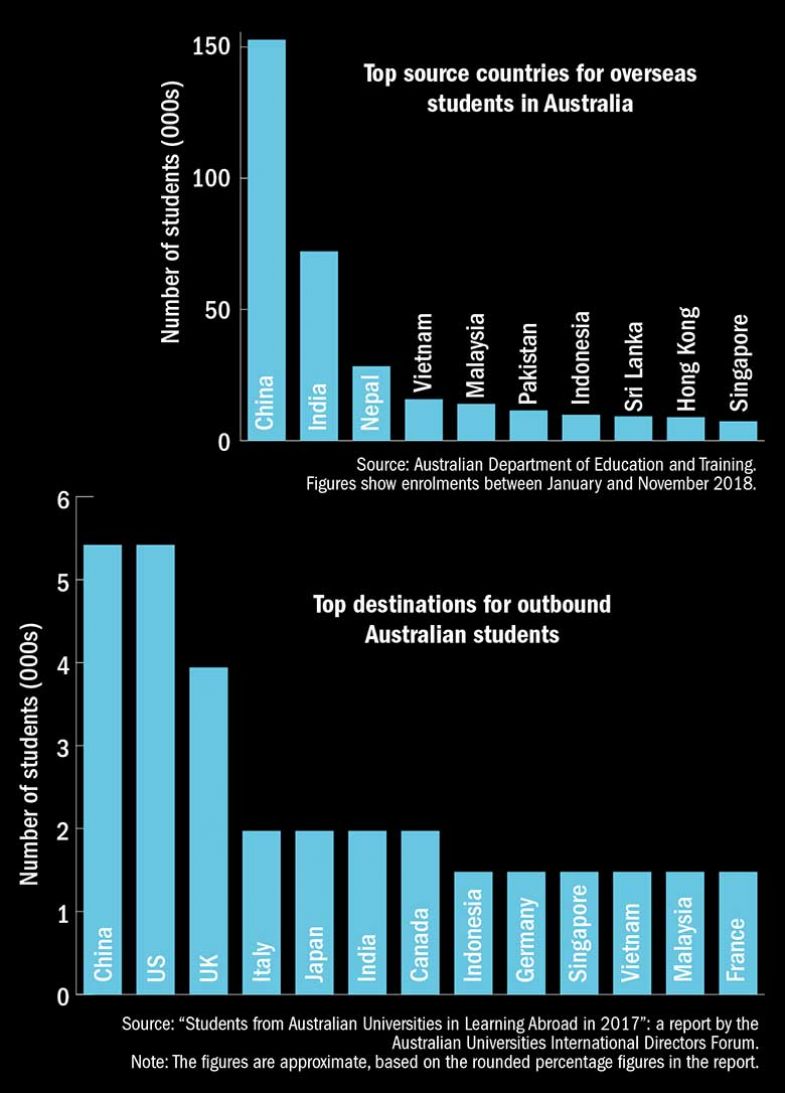
In research, however, the story is a little different. Australians are renowned for working with overseas researchers, and the majority of the country’s journal papers now feature international co-authors. On this measure, Australia ranks roughly on a par with the UK and Canada, marginally behind the Netherlands and France but ahead of Germany and miles in front of the US, Japan, South Korea and China.
Between 2013 and 2017, Australia produced more than 230,000 internationally co-authored publications listed on publisher Elsevier’s Scopus database. Somewhat predictably, the US topped the list of collaboration partners, contributing to more than 66,000 titles, followed by the UK with about 48,000. But third-placed China, whose researchers teamed up with Australians on some 42,000 publications, was well in front of Germany, Canada and France. Asia-Pacific neighbours Japan and New Zealand also ranked among Australia’s top 10 partners in collaborative publications, contributing to more than 10,000 works each.
Overall, Asia-Pacific authors had a hand in 40 per cent of Australia’s collaborative publications over the five-year period, behind Europe’s 48 per cent but ahead of North America’s 34 per cent. Many publications, of course, involve authors from multiple regions.
“We work with the best in the world, wherever they are,” says Michelle Simmons, an internationally renowned quantum physicist and 2018 Australian of the Year. “Australians are known internationally to be strong collaborators across the board,” while in other countries “you can go to some groups where they’re quite insular and don’t really leave their own country”.
Simmons says that in her highly competitive field of quantum computing, where every country wants a piece of the action, precision equipment and leading expertise can be found all around the world. She cites a partnership with the Indian Institute of Science in Bangalore. “They do noise measurements: they’re expert at it,” says Simmons, whose centre also has research partners in Singapore, South Korea and China. “We don’t do those measurements here [in Sydney]. Research collaboration has to be from the bottom up. It has to be real – something where you’ve got an expertise, they’ve got an expertise, and you learn from each other.”
Ten years ago, Simmons says, India had little of the appropriate equipment. However, “the group we teamed up with had some, and they’ve now grown. I think you’re going to see that all across the world – those facilities are going to grow.”
Australian researchers seem to have recognised this, increasing their collaborative output with researchers from more than 180 countries between 2013 and 2017. Co-authored publications involving 65 of these countries now average more than 100 a year, including 10 where they more than doubled over that period.
Three of these 10 nations are in the Asia-Pacific: Bangladesh (where co-authored publications more than tripled), Vietnam (up 157 per cent) and Pakistan (up 104 per cent) (see graph, page 39). Collaborations with South Korea, Indonesia, India, Hong Kong and China have also increased by between 54 and 84 per cent.
Australian research collaborations with China are causing some disquiet, particularly in fields related to defence and information technology. Some observers fear that the collaborations could allow Chinese companies to steal intellectual property, or hand the Chinese government new tools to oppress its people. But the ties are evidently deep; China is easily Australia’s primary collaboration partner in disciplines related to these areas, such as chemistry, engineering, materials science and mathematics. Indeed, the Asia-Pacific region in general is Australia’s most prolific collaboration partner in engineering and technology: the disciplines on which researchers in countries such as China, South Korea and Singapore are often encouraged to concentrate, and for which they are most renowned.
Meanwhile, the Asia-Pacific is second to Europe in the broad fields of agricultural and natural and social sciences, and third behind Europe and North America in medical sciences and the humanities.

While scores of Australian academics have rejected Ramsay Centre funding on the grounds that it would unreasonably prioritise the West in humanities teaching, Scopus data show that the West is already prioritised when it comes to humanities research.
Of almost 6,000 internationally co-authored publications in the humanities between 2013 and 2017, 51 per cent involved collaborators from Europe, while 33 per cent were co-written by North American authors and just 26 per cent with Asia-Pacific researchers.
The continent neighbouring Australia spawned the great civilisations of China and the Indus Valley, made massive advances in the arts and conjured two of the world’s five major religions. Yet in religious studies, literature, visual and performing arts, literature, philosophy and history, Australian researchers primarily collaborate with North America and Europe.
David Brophy, a senior lecturer in modern Chinese history at the University of Sydney – and an avowed opponent of the Ramsay degree – says the diversity of offerings in his department has “dried up” in recent decades.
“Twenty to 30 years ago, we had historians working on India, South-east Asia and so on,” he says. “By the time I arrived five years ago, all that was gone. Mostly, what we teach is the history of the West, in which white people are the main actors. That can be a deterrent to students of colour taking an interest in the field. And if you don’t have students of colour coming through and becoming historians, the profession risks remaining bound within a homogeneous cultural outlook.”
Brophy says that while there are “points of contact” with universities in Indonesia and South-east Asia, there are few incentives for Australian academics to engage deeply with those regions. “There’s a lot of interest in China now, but it hasn’t really translated into deeper intellectual exchange,” he says. “There’s a deep-seated sense that the European heritage has greater cultural value for us, and our engagement with Asia is much more transactional. The idea that you would study these places because they have as much intrinsic value as the things we culturally identify with from Europe – that message never really got through.”
University of Sydney sociologist Salvatore Babones says that compared with his native US, Australia’s collaboration with the Asia-Pacific is lacklustre. Babones, who supports the Ramsay proposal, says Australian academics and university administrators pay “a lot of lip service” to Asian engagement “without really taking it seriously. People are very quick to be politically correct, because being politically correct is cheap. When it comes to spending money and wanting to put in the effort – the anthropologists do it, the language studies people certainly do it, but we don’t do it systematically.”
Babones has never won a grant from Sydney’s China Studies Centre despite publishing regularly on the Chinese economy. He says the centre has practically no engagement with academics who are not directly funded by it – unlike similar centres in the US, which collaborate widely.
Sydney academics are incentivised to work with scholars from highly ranked universities, Babones says, but not from lower ranked institutions. “The university will pay enormous amounts for anyone who has a Harvard affiliation to come out [to speak at Sydney]. For people from Asian universities it’s very difficult even to get a letter of support for a visa. I’ve wanted to bring Chinese scholars over and been told that without evidence of a long-standing collaboration, they won’t be sponsored. It is very difficult to bring a visitor for three months self-funded.”
Sydney’s deputy vice-chancellor for research, Duncan Ivison, says the criticism is unfair. He says the China Studies Centre was envisaged not as a hub for China specialists but as a focal point for research “in which China features as a really important domain. It includes people who work on energy, obesity, architecture, engineering – a much broader remit and community of interest than similar centres around the world.”
Ivison cites Sydney’s university centre in Suzhou, China, its first major foreign facility, as a testament to its Asia-Pacific engagement. “It’s open to the entire university community and it’s been used by historians, medical researchers, business [scholars] – a wide array of colleagues.”
Ivison agrees that Sydney’s history department has narrowed, but says that this reflects a national decline in humanities funding. “Name me one history department that has grown anywhere in Australia in the past 10 years,” he challenges. “There’s no question that we have lost capacity on South Asia and Latin America in particular. Having said that, we still teach Spanish and Latin American studies and Chinese, Indonesian and Japanese in our language school.”
As for Sydney’s ties with top-ranking global universities, Ivison is unapologetic, saying they are driven as much by individual academics as by the university administration. “It’s part of what our researchers want,” he insists. However, “most of our partners in Asia are not in the top 50. And most of our funding for partnerships is about getting our staff into the region, or helping bring [Asian staff] to us.”
Joseph Siracusa, president of the Council for the Humanities, Arts and Social Sciences, notes that while Australia has considerable collaborations with Asia, they are often on pragmatic rather than characteristically Asian topics.
“The Asians we’re engaged with tend to be interested in Western or globalised subjects,” says Siracusa, a professor of human security and international diplomacy at RMIT University. Partly, he says, this is because Asian universities’ interest in the humanities is inhibited by the authoritarian regimes that are common in the region. “Working with authoritarian countries is a very strange business,” he says. “They’re not interested in the true, the good and the beautiful – they’re not even interested in Socrates…They’re interested in globalisation and how they can move in it a little better.”
The authorities in countries such as China and Vietnam are not welcoming to foreign humanities researchers, he claims, while domestic humanities researchers are also restricted in what they can investigate: “When they come here, the Vietnamese and Chinese talk about things they can’t talk about back home,” Siracusa says.
Meanwhile, Australian universities’ reliance on casual academics does not encourage Asian sabbaticals: “Sessionals, frankly, are not worried about their next study leave – they’re worried about the next pay cheque.”
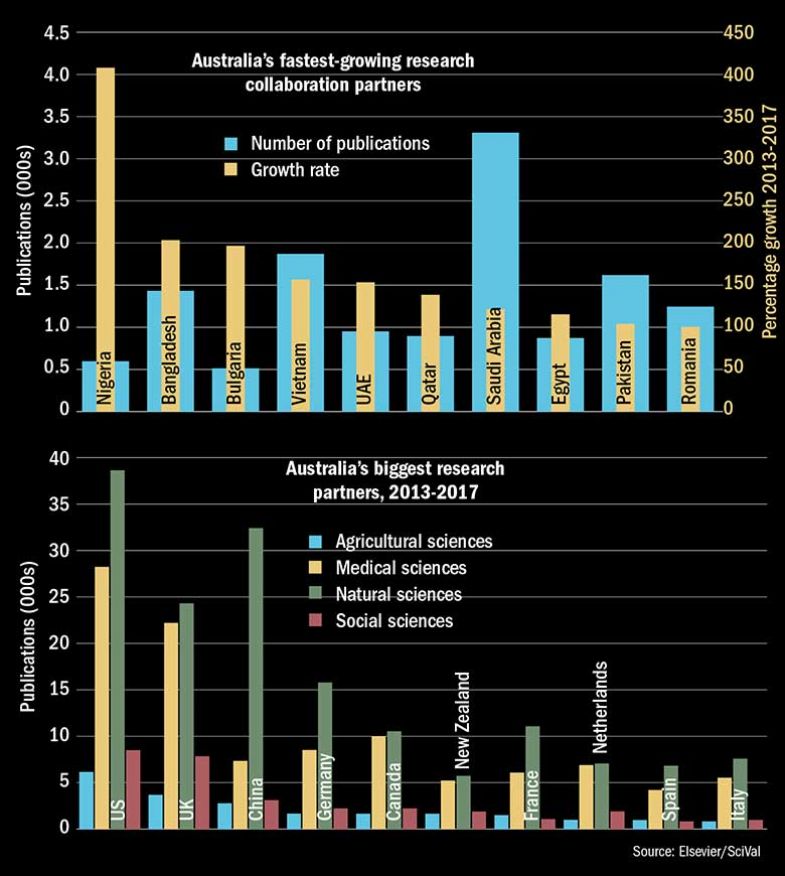
Babones says that pragmatic concerns also militate against collaboration with Asian humanities scholars, since “a lot of hand-holding” is generally required.
“The simple fact is that working with Asian academics in the humanities and social sciences requires educational effort on the part of the Western scholar,” he says. “It’s a lot of work.”
Babones says that Asian counterparts often need guidance in basic research techniques, such as framing research questions or using statistical software packages. Resource and language limitations, as well as cultural constraints, undermine standards, he says, with scholars in some Asian countries rarely publishing in English language journals.
“China didn’t even allow sociology until the 21st century,” he says. “It was a proscribed discipline, so of course the level of expertise is just not there.”
Language and linguistics is another field where the Asia-Pacific lags well behind Europe in terms of Australian research collaborations. University of Newcastle linguist Bill Palmer says that more engagement would be desirable given that the Asia-Pacific is home to around one-third of the world’s languages – at least half of them endangered. But while Palmer himself leads a team labouring to document these languages before they disappear, he echoes Babones’ point that few Asia-Pacific linguists have the technical capabilities to work “at the level of international scholarship. Before there can be collaborative research there needs to be capacity building. There is some, but it’s very limited.”
Targeted scholarships to bolster Asia-Pacific locals’ linguistic research skills would have soft power spin-offs to counter the growing influence of China, Palmer adds. “There is scarcely a better way of engaging with people at the grass roots than linguistic research, where people are embedded in the community. Providing capacity building funding for speakers of those indigenous languages would have a very positive effect, but it requires vision – and of course it requires money.”
One hotspot of endangered indigenous languages is Indonesia, the crowded archipelago to Australia’s north. The Australia-Indonesia Centre, an alliance of 11 universities from both countries, has brought together some 400 researchers in many fields since its establishment in 2014. According to its Jakarta-based director, Kevin Evans, 70 per cent of these scholars had never previously collaborated. “We’ve introduced a whole new cohort of Australians to Indonesian researchers, and vice versa. That has probably been our most valuable achievement, but there’s huge scope for more,” he says.
While giants such as the US and perhaps China have the critical mass to collaborate internally, most other countries, Evans says, need to generate scale by collaborating cross-nationally. If Australian institutions endure the “pain and frustration” of working out how to engage with Indonesian institutions systematically – rather than taking the easy path of just pairing up individual researchers – they will live up to Australia’s “mantra” of being a gateway to the East, and increase their attractiveness to potential collaborators from elsewhere.
“Going through the nitty-gritty of institutional arrangements is vastly more complicated than free researchers talking to free researchers. But if we can get a deeper understanding of how that works, it becomes an interesting proposition for Europeans and others to partner with Australia,” he says.
“And if we develop capacity to do it with Indonesia, doing it with other countries in the region will become easier, too.”
POSTSCRIPT:
Print headline: Is Australia riding the Asian wave?
Register to continue
Why register?
- Registration is free and only takes a moment
- Once registered, you can read 3 articles a month
- Sign up for our newsletter
Subscribe
Or subscribe for unlimited access to:
- Unlimited access to news, views, insights & reviews
- Digital editions
- Digital access to THE’s university and college rankings analysis
Already registered or a current subscriber? Login
